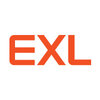Filter interviews by
Photon Technologies Interview Questions and Answers
12 Interview questions
Encapsulation in Java is a fundamental OOP concept that restricts direct access to object data and methods, promoting data hiding.
Encapsulation is achieved using access modifiers like private, protected, and public.
Example: A class with private variables and public getter/setter methods to access them.
It helps in maintaining the integrity of the data by preventing unauthorized access.
Encapsulation allows for flexi...
Abstraction in Java is a fundamental OOP concept that hides complex implementation details and exposes only essential features.
Abstraction allows focusing on what an object does instead of how it does it.
Java achieves abstraction through abstract classes and interfaces.
Example: An abstract class 'Animal' can have an abstract method 'makeSound()' without defining how each animal makes sound.
Interfaces define a cont...
I will handle alerts by prioritizing them based on severity, investigating the root cause, and implementing necessary actions to resolve the issue.
Prioritize alerts based on severity levels (e.g. critical, high, medium, low)
Investigate the root cause of the alert to understand the underlying issue
Collaborate with relevant teams to address and resolve the alert in a timely manner
Implement necessary actions to preve...
Dropdowns can be handled by identifying the dropdown element, selecting an option, and verifying the selection.
Identify the dropdown element using its locator (ID, class, etc.)
Use a method like selectByVisibleText() or selectByValue() to choose an option
Verify the selected option to ensure it was successfully chosen
Work manager is an Android library that manages background tasks efficiently.
Work manager is part of Android Jetpack and is used for deferrable background tasks.
It provides a way to schedule tasks that need to run even if the app is in the background or not running.
Work manager handles task constraints, retries, and backoff policies automatically.
Tasks can be one-time or periodic, with support for specifying const...
Data can be transferred between components using props, state, context, or Redux.
Props: pass data from parent to child components
State: manage data within a component
Context: share data between components without passing props
Redux: manage global state for the entire application
Examples: passing user data from a login component to a dashboard component using props, managing form data within a component using state...
Semantic tags in HTML are special tags that provide meaning and structure to the content, making it easier for search engines and screen readers to understand.
Semantic tags help define the structure of a web page, such as <header>, <footer>, <nav>, <article>, <section>, <aside>, <main>, etc.
They improve accessibility by providing context to screen readers and assistive tec...
Inline elements are elements that do not start on a new line and only take up as much width as necessary. Block elements are elements that start on a new line and take up the full width available.
Inline elements include <span>, <a>, <strong>, <em>, <img>, <input>, <button>
Block elements include <div>, <p>, <h1> - <h6>, <ul>, <ol>, <li...
Routing is the process of selecting a path for network traffic. It is used to direct users to different pages in a web application.
Routing is used in web development to navigate between different pages or views in a web application
It involves defining routes and mapping them to specific components or views
Routing can be used to pass parameters and data between different components
Component services are reusable se...
Angular is a complete rewrite of AngularJS with improved performance and features.
Angular is a TypeScript-based framework while AngularJS is a JavaScript-based framework.
Angular has a more component-based architecture while AngularJS uses a controller-based architecture.
Angular has better performance and improved features like server-side rendering and lazy loading.
Modules in Angular are used to organize code into...
Photon Technologies Interview Experiences
11 interviews found
I applied via Naukri.com and was interviewed in Nov 2022. There were 3 interview rounds.

(5 Questions)
- Q1. WHAT IS THE DIFFERENCE BETWEEN ANGULAR AND ANGULAR JS ? WHAT ARE THE MODULES IN ANGULAR ?
- Ans.
Angular is a complete rewrite of AngularJS with improved performance and features.
Angular is a TypeScript-based framework while AngularJS is a JavaScript-based framework.
Angular has a more component-based architecture while AngularJS uses a controller-based architecture.
Angular has better performance and improved features like server-side rendering and lazy loading.
Modules in Angular are used to organize code into sepa...
- Q2. WHAT IS ROUTING HOW CAN WE USE THAT ? WHAT ARE COMPONENT SERVICES ?
- Ans.
Routing is the process of selecting a path for network traffic. It is used to direct users to different pages in a web application.
Routing is used in web development to navigate between different pages or views in a web application
It involves defining routes and mapping them to specific components or views
Routing can be used to pass parameters and data between different components
Component services are reusable service...
- Q3. WHAT IS LAZY LOADING ? HOW CAN WE CALL HTTP REQUESTS FROM ONE COMPONENT TO ANOTHER COMPONENT ?
- Ans.
Lazy loading is a technique to defer loading of non-critical resources until they are needed.
Lazy loading improves page load time and performance.
It is commonly used for images, videos, and other media files.
To call HTTP requests from one component to another, we can use Angular's HttpClient service.
We can inject the HttpClient service in the constructor of the component and use its methods to make HTTP requests.
We can...
- Q4. HOW CAN WE TRANSFER DATA FROM ONE COMPONENT TO ANOTHER ?
- Ans.
Data can be transferred between components using props, state, context, or Redux.
Props: pass data from parent to child components
State: manage data within a component
Context: share data between components without passing props
Redux: manage global state for the entire application
Examples: passing user data from a login component to a dashboard component using props, managing form data within a component using state, sha...
- Q5. WHAT ARE INLINE ELEMENTS AND BLOCK ELEMENTS IN HTML ?
- Ans.
Inline elements are elements that do not start on a new line and only take up as much width as necessary. Block elements are elements that start on a new line and take up the full width available.
Inline elements include <span>, <a>, <strong>, <em>, <img>, <input>, <button>
Block elements include <div>, <p>, <h1> - <h6>, <ul>, <ol>, <li>,...
(1 Question)
- Q1. WHAT IS SYMANTIC TAG IN HTML?
- Ans.
Semantic tags in HTML are special tags that provide meaning and structure to the content, making it easier for search engines and screen readers to understand.
Semantic tags help define the structure of a web page, such as <header>, <footer>, <nav>, <article>, <section>, <aside>, <main>, etc.
They improve accessibility by providing context to screen readers and assistive technolo...
Interview Preparation Tips
Skills evaluated in this interview
(2 Questions)
- Q1. What is abstraction in Java
- Ans.
Abstraction in Java is a fundamental OOP concept that hides complex implementation details and exposes only essential features.
Abstraction allows focusing on what an object does instead of how it does it.
Java achieves abstraction through abstract classes and interfaces.
Example: An abstract class 'Animal' can have an abstract method 'makeSound()' without defining how each animal makes sound.
Interfaces define a contract ...
- Q2. What is encapsulation in java
- Ans.
Encapsulation in Java is a fundamental OOP concept that restricts direct access to object data and methods, promoting data hiding.
Encapsulation is achieved using access modifiers like private, protected, and public.
Example: A class with private variables and public getter/setter methods to access them.
It helps in maintaining the integrity of the data by preventing unauthorized access.
Encapsulation allows for flexibilit...
I applied via Naukri.com and was interviewed in Aug 2024. There was 1 interview round.
(4 Questions)
- Q1. Interviewer asked a lot of questions covering almost everything in android
- Q2. Explain Work manager and how it is implemented
- Ans.
Work manager is an Android library that manages background tasks efficiently.
Work manager is part of Android Jetpack and is used for deferrable background tasks.
It provides a way to schedule tasks that need to run even if the app is in the background or not running.
Work manager handles task constraints, retries, and backoff policies automatically.
Tasks can be one-time or periodic, with support for specifying constraint...
- Q3. How retrofit is integrated
- Ans.
Retrofit is integrated in Android apps using a few simple steps.
Add Retrofit dependency in build.gradle file
Create an interface with API endpoints using Retrofit annotations
Instantiate Retrofit object with base URL and converter factory
Create API service using the interface and Retrofit object
Make API calls using the service and handle responses
- Q4. How to create custom UI
- Ans.
Custom UI can be created by designing layouts using XML or programmatically in Android.
Design UI elements using XML in layout files
Customize UI elements programmatically using Java or Kotlin
Use libraries like ConstraintLayout for complex layouts
Implement custom views by extending existing views or creating new ones
Interview Preparation Tips
- Work manager
- Services
- Custom UI
I applied via Naukri.com and was interviewed in Aug 2024. There was 1 interview round.
(3 Questions)
- Q1. How will you handle alert
- Ans.
I will handle alerts by prioritizing them based on severity, investigating the root cause, and implementing necessary actions to resolve the issue.
Prioritize alerts based on severity levels (e.g. critical, high, medium, low)
Investigate the root cause of the alert to understand the underlying issue
Collaborate with relevant teams to address and resolve the alert in a timely manner
Implement necessary actions to prevent si...
- Q2. How will you handle dropdown
- Ans.
Dropdowns can be handled by identifying the dropdown element, selecting an option, and verifying the selection.
Identify the dropdown element using its locator (ID, class, etc.)
Use a method like selectByVisibleText() or selectByValue() to choose an option
Verify the selected option to ensure it was successfully chosen
- Q3. About cucumber and complete details
(2 Questions)
- Q1. Core Java related questions
- Q2. Spring Boot and DB related questions
I applied via Naukri.com and was interviewed in Jun 2024. There was 1 interview round.
(2 Questions)
- Q1. Project experience
- Q2. All about working of APIs
Interview Preparation Tips
After briefing my project experience, the interviewer started to ask technical questions. The interviewer was asking questions from a list of questions he have prepared earlier. He started to ask the questions from the list in which I was not at all experienced. In my opinion ,The interviewer should listen to the project experiences and know the tech stack of the interview and ask questions based on that. He was asking questions from no where and something I haven’t ever worked on so far. It was a very bad experience in my entire career or entire interview experiences. Please do make the interviewer who can ask questions in reflect of the candidates experiences and skills. I felt so bad, saying repeatedly that I don’t know this technology. I haven’t worked on this.
(1 Question)
- Q1. All java 8 features
- Ans.
Java 8 introduced several new features including lambda expressions, streams, default methods, and more.
Lambda expressions allow for functional programming in Java.
Streams provide a way to work with collections in a more functional style.
Default methods allow interfaces to have method implementations.
Optional class helps to avoid NullPointerExceptions.
DateTime API provides a more comprehensive way to work with dates an...
I applied via Naukri.com and was interviewed in Nov 2022. There were 5 interview rounds.

(1 Question)
- Q1. All sitecore questions which are all scenario based
(1 Question)
- Q1. Technical architect interview
(1 Question)
- Q1. Client Interview with all sitecore questions
(1 Question)
- Q1. Salary discussion , company policies
Interview Preparation Tips

Was asked to write a program on converting list of names into caps. Good conceptuql questions on java 8
Interview Preparation Tips
Good questions on Springboot.
Good questions on microservices.
Was asked to write programs on normal editor. Hence you should remember package imports.
I applied via Naukri.com and was interviewed in Jun 2021. There were 4 interview rounds.
Interview Questionnaire
1 Question
- Q1. Roles and responsibilities...wireframes..diff between brd and frd.
Interview Preparation Tips
I applied via Naukri.com and was interviewed before Nov 2021. There were 3 interview rounds.

(1 Question)
- Q1. Have your worked on Agile?
(1 Question)
- Q1. What is Software development life cycle?
Interview Preparation Tips
Skills evaluated in this interview
Top trending discussions






Photon Technologies Interview FAQs
Tell us how to improve this page.
Photon Technologies Interviews By Designations
- Photon Technologies Technical Lead Interview Questions
- Photon Technologies Node JS Developer Interview Questions
- Photon Technologies Software Developer Interview Questions
- Photon Technologies Senior Software Engineer Interview Questions
- Photon Technologies Business Analyst Interview Questions
- Photon Technologies Java Developer Interview Questions
- Photon Technologies Senior Android Developer Interview Questions
- Photon Technologies SDE Interview Questions
- Show more
Interview Questions for Popular Designations
Overall Interview Experience Rating
based on 11 interview experiences
Difficulty level
Duration
Interview Questions from Similar Companies
Photon Technologies Reviews and Ratings
based on 53 reviews
Rating in categories
|
Senior Software Engineer
76
salaries
| ₹11 L/yr - ₹20.2 L/yr |
|
Software Engineer
24
salaries
| ₹5.4 L/yr - ₹12 L/yr |
|
Technical Lead
22
salaries
| ₹16.4 L/yr - ₹23 L/yr |
|
Softwaretest Engineer
16
salaries
| ₹3.6 L/yr - ₹9.6 L/yr |
|
Software Developer
12
salaries
| ₹7.9 L/yr - ₹14.1 L/yr |

Cognizant

EXL Service

Optum Global Solutions

Hexaware Technologies
- Home >
- Interviews >
- Photon Technologies Interview Questions











